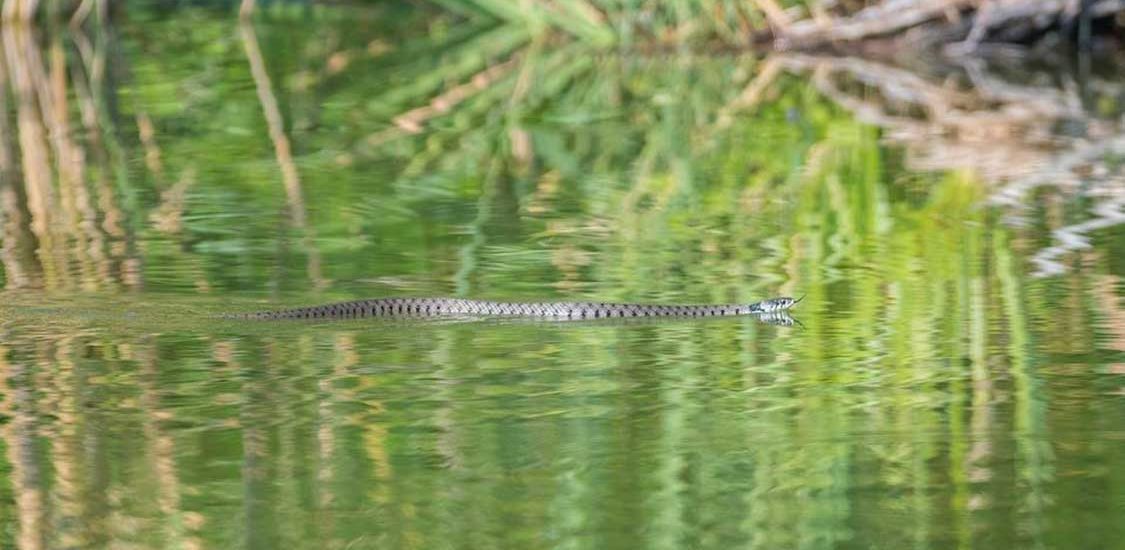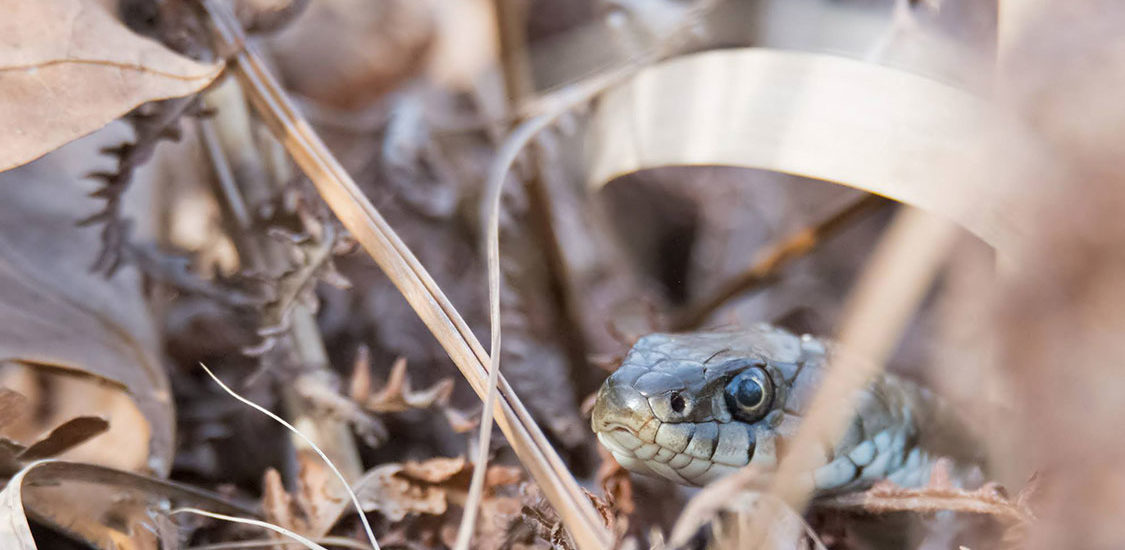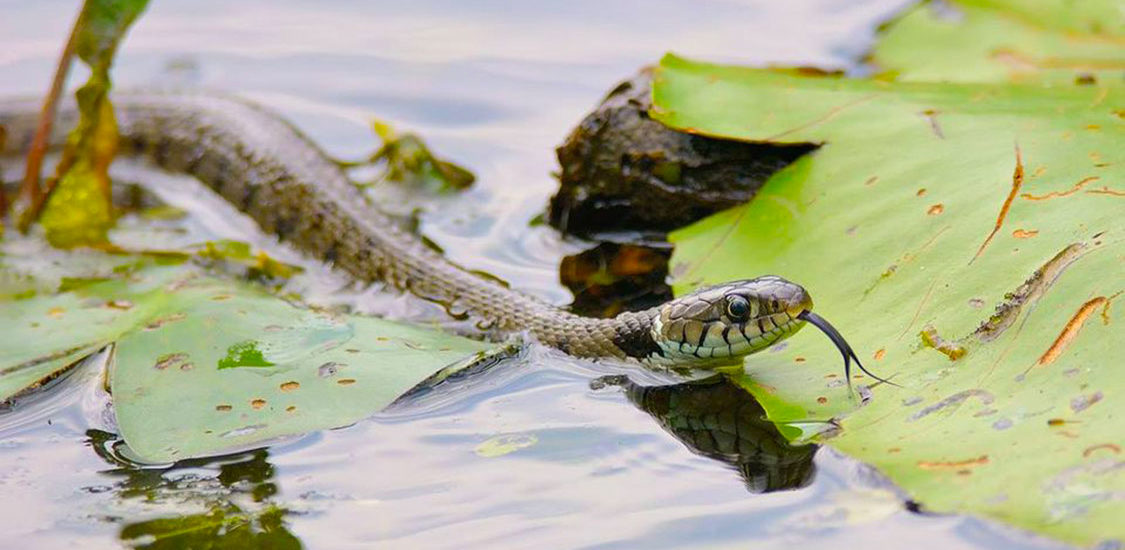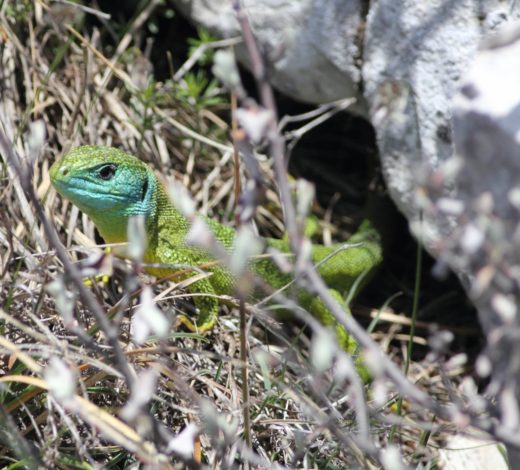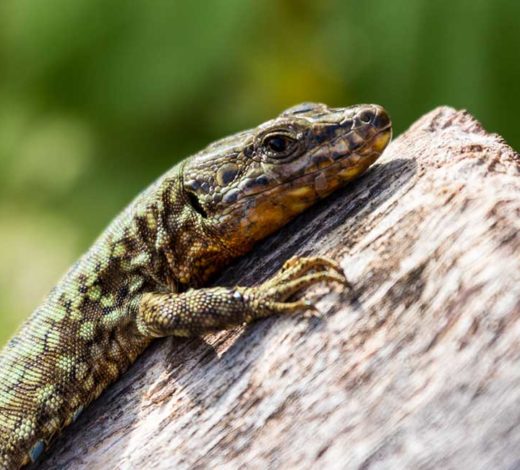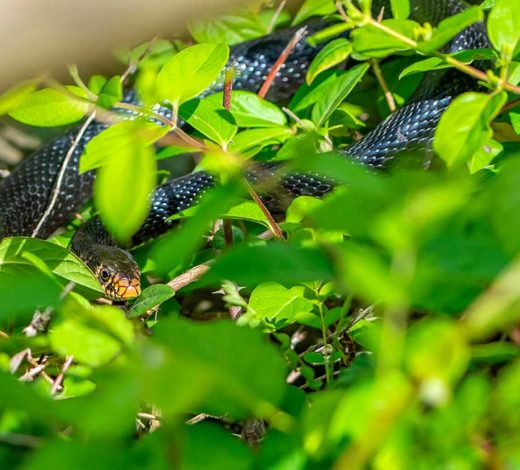Grass Snake
(Natrix natrix)
A species protected by Regional Law 10/2008.
This species uses Batesian mimicry, that is, this harmless species (Natrice) imitates the characteristics of another dangerous species (Vipera) to discourage possible predators.
Distribution
This is one of the most common Italian snakes, widespread on the peninsula and also on the islands.
Description
This is the most common Italian aquatic snake, with a colour ranging from grey-black to hazel-black and a characteristic yellow ring behind the head, which gives it its alternative name, ‘ringed snake’. The grass snake is harmless and if disturbed, immediately takes shelter in the water. Usually diurnal, it preys mainly on amphibians, integrating its diet with fish, mice, and other reptiles. Babies’ diets are based on tadpoles, earthworms, and aquatic insects. They use different strategies to defend themselves from predators. If cornered, they pull an ‘ace from their sleeves’: they adopt an ingenious defensive strategy called thanatosis, that is, they play dead, opening their mouths wide and turning belly up. All of this is made even more real with the emission of a foul-smelling substance reminiscent of an animal that has been dead for a long time.
Habitat
They favour a varied habitat, living near damp environments with different bodies of water, both lotic and lentic (slow- and fast-moving).
Observation in the Torbiera Reserve
They are relatively common in the Reserve, except in winter, when they enter a period of brumation.
